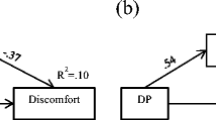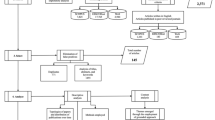Abstract
The study we report here explored how private liberal arts colleges adapted to the Great Recession of 2007. We examined institutional changes at three private liberal arts colleges and their effects on the institutions’ operations. For this multiple-case study we analyzed data from three colleges in the southeastern region of the United States; and the data included 30 participant interviews, public and private documents, and observational field notes. This study highlights the prominence of both the external environment and institutional factors in the survival story of liberal arts colleges.
Similar content being viewed by others
References
Aldrich, H. (1979). Organizations and environments. Englewood Cliffs, NJ: Prentice-Hall.
Association of American Colleges and Universities (2007). A report from the National Leadership Council for Liberal Education and America’s Promise: College learning for the new global century. Washington, DC: Author.
Breneman, D. W. (1994). Liberal arts colleges: Thriving, surviving, endangered? Washington, DC: Brookings Institution.
Cameron, K. S. (1984). Organization adaptation and higher education. Journal of Higher Education, 55, 122–144.
Chabotar, K. J. (2010). What about the rest of us? Small colleges in financial crisis. Change, 42(4), 6–13.
Creswell, J. W. (2008). Educational research: Planning, conducting, and evaluating quantitative and qualitative research (3rd ed.). Upper Saddle, NJ: Pearson.
Denzin, N. K., & Lincoln, Y. S. (1997). The discipline and practice of qualitative research. In N. K. Denzin & Y. S. Lincoln (Eds.), Handbook of qualitative research (pp. 1–28). Thousand Oaks, CA: Sage.
Goddard, R. W. (1986). Why hire humanities graduates. Personnel Journal, 65(2), 22–26.
Goodman, C. J., & Mance, S. M. (2011). Employment loss and the 2007-09 recession: An overview. Monthly Labor Review, 134(4), 3–12.
Hersh, R. H. (1999). Generating ideals and transforming lives: A contemporary case for the residential liberal arts. Daedalus, 128(1), 173–196.
Horowitz, H. L. (2005). In the wake of Laurence Veysey: Re-examining the liberal arts college. History of Education Quarterly, 45, 420–426.
Kuh, G. (2005). Built to engage: Liberal arts colleges and effective educational practice. In Liberal arts colleges in American higher education: Challenges and opportunities. ACLS Occasional Paper, No. 59 (pp. 122-150). New York, NY: American Council of Learned Societies.
Lincoln, Y. S., & Guba, E. G. (1985). Naturalistic inquiry. Beverly Hills, CA: Sage.
Merriam, S. B. (2009). Qualitative research: A guide to design and implementation (3rd ed.). San Francisco, CA: Jossey-Bass.
Oakley, F. (2005). The liberal arts college: Identity, variety, destiny. In Liberal arts colleges in American higher education: Challenges and opportunities. ACLS Occasional Paper, No. 59 (pp. 1-15). New York, NY: American Council of Learned Societies.
Simpson, M. (1980). The case for the liberal arts. Liberal Education, 66, 315–320.
Stake, R. E. (2000). Case studies. In N. K. Denzin & Y. S. Lincoln (Eds.), Handbook of qualitative research (pp. 435–454). Thousand Oak, CA: Sage.
U.S. News & World Report (2011). Best colleges. Washington, DC: U.S. News & World Report.
U.S. News & World Report (2012). National liberal arts colleges rankings. Retrieved from http://colleges.usnews.rankingsandreviews.com/best-colleges/rankings/national-liberal-arts-colleges
Yin, R. K. (2009). Case study research: Design and methods (4th ed.). Los Angeles, CA: Sage.
Zammuto, R. (1984). Are the liberal arts an endangered species? Journal of Higher Education, 55, 184–211.
Author information
Authors and Affiliations
Corresponding author
Rights and permissions
About this article
Cite this article
Hilbun, A.J., Mamiseishvili, K. Organizational Adaptation of Liberal Arts Colleges during the Great Recession of 2007. Innov High Educ 41, 5–18 (2016). https://doi.org/10.1007/s10755-015-9331-x
Published:
Issue Date:
DOI: https://doi.org/10.1007/s10755-015-9331-x




